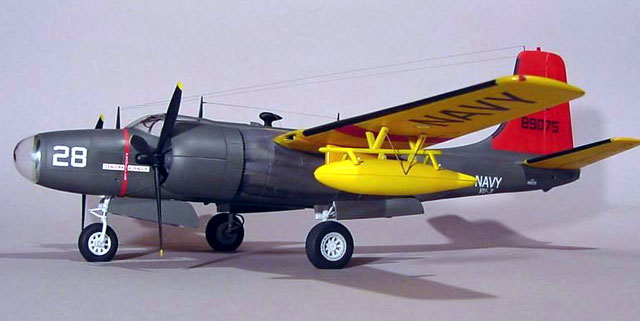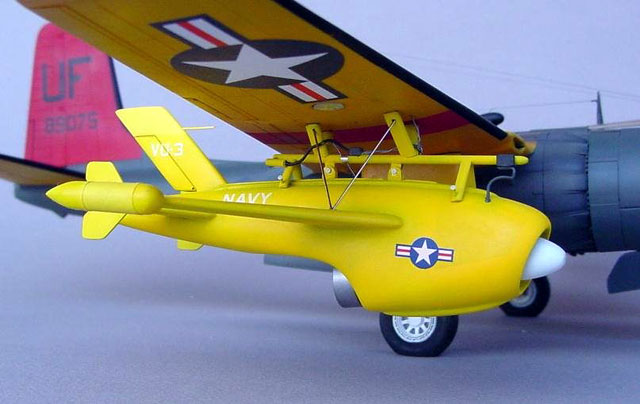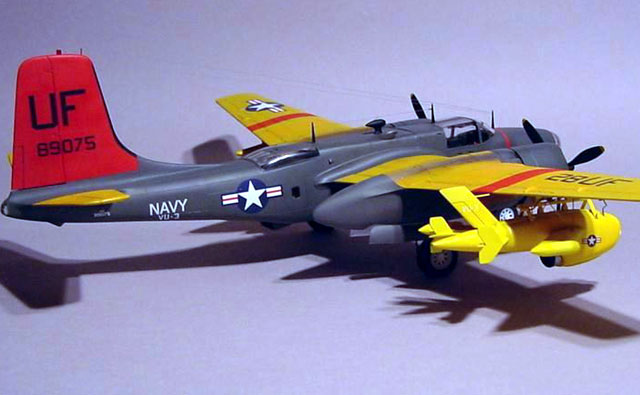|
Douglas JD-1D Invader
by Mark Brouyere
 |
|
Douglas JD-1D Invader |

HyperScale is proudly supported by Squadron
When I decided to build the Pro-Modeler Invader, I wanted something special.
I had seen an advertisement about a resin conversion to make a JD-1, the
drone-carrying variant operated by the US Navy in the 1950s. I ordered the resin
set via the Internet, but when I received it, I was disappointed. The parts were
crudely cast, with lots of air bubbles, and the instructions were basic. But
when you buy something unseen, you can sometimes be unlucky.
I decided to try the conversion anyway. Firstly, I would try to build a
decent Firebee drone with its pylon, using the documentation I had. If that was
successful, I could carry on with the rest of the modifications on the airframe.
If not, it would still be possible to find another variant/decoration.
After some work, the Firebee was acceptable, and the building of the pylons
took less work than I first thought.

The A-26 was one of the last kits from Monogram/Pro-Modeler/Revell to use
raised panel lines. These were sanded off, and the model was rescribed. The
interior was improved using plastic bits and parts from Eduardís photoetched
frets. The cowl flaps were also replaced by the photoetched items, but this is
hardly noticeable once the kit is completed!
The resin nose was not a good fit, so I replaced it with the kit-supplied
gun-nose suitably detailed and modified with a self-made vac-formed nose cone.
Luckily I didnít attach the engines until after painting and final assembly,
because the weight put in the nose cone didnít prove sufficient to prevent
tail-sitting!
The model was painted using Gunze and Aeromaster acrylics.
The decals were made on my PC and printed on an ALPS printer, with the
national insignias coming from an Aeromaster sheet.

This was a really enjoyable project, and certainly a colourful one! The only
problem is that, with the resin drone and ballast tank, the model is quite heavy
and must be handled carefully.
Click the thumbnails below to view
larger images:
Model, Images and
Article Copyright © 2002 by Mark
Brouyere
Page Created 28 January 2002
Last updated 04 June 2007
Back to HyperScale Main Page
Back to Features Page |
Home
| What's New |
Features |
Gallery |
Reviews |
Reference |
Forum |
Search